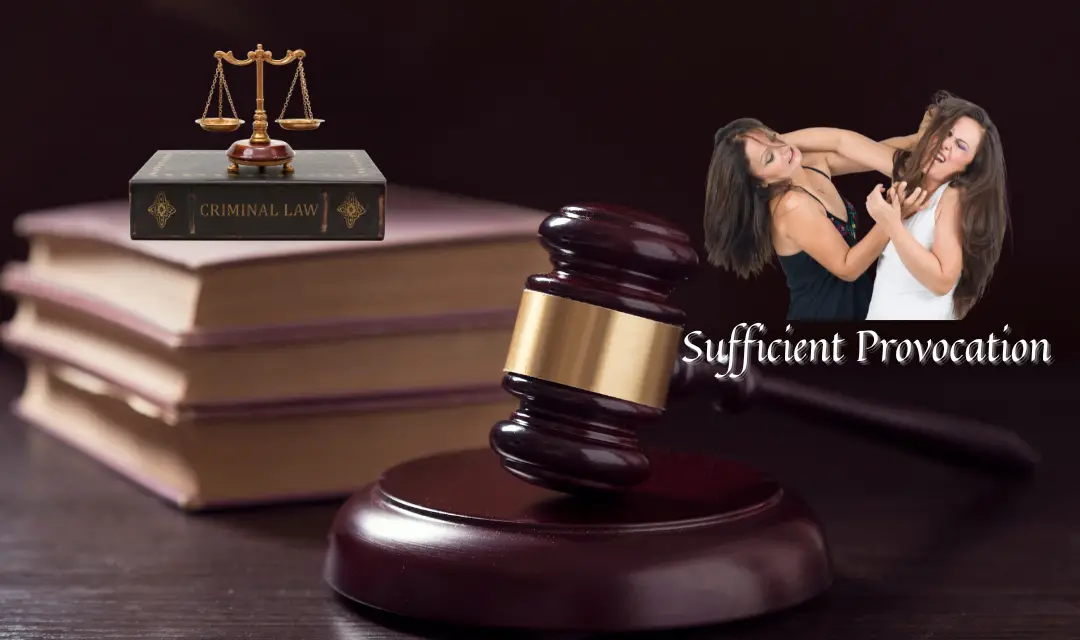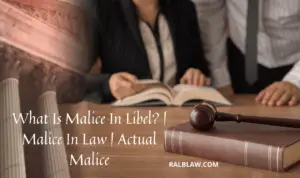Pointing fingers, he who started it all. This, in a nutshell, spells out provocation. Whether sufficient or not, it is a matter of evidence. Thus, we are here to break down the doctrine of sufficient provocation, thereby, understanding its legal definition.
In the perspective of a layman, there is an assumption that once a person committed a crime or felony, all that is left to do is to defend himself in court, and either win and be free, or lose and suffer the “as is” consequences of his grueling actions, as the case may be.
However, are these really just the options?
The law and Court say otherwise.
Under the Revised Penal Code of the Philippines, the concept of ‘Mitigating Circumstances’ has been enunciated. The presence of these lessen the gravity of a crime or the perpetrator’s responsibility for it.
In particular, how can the presence of instigation, agitation, or stimulation from the aggrieved party be a factor that can reduce the attacker’s criminal liability?
The Law | Article 13, Paragraph 4 of the Revised Penal Code
Clearly stated in Article 13 of the Revised Penal Code of the Philippines is the enumeration of the circumstances which mitigate criminal liability, specifically being paragraph 4, which provides that:
“sufficient provocation or threat on the part of the offended party immediately preceded the act.”1
Firstly, what is ‘provocation?’
According to Reyes (2021), ‘provocation’ is believed to be any unjust or improper action or behavior on the part of the aggrieved party that is capable of exciting, agitating, or irritating others.
What is sufficient provocation?
In the aforementioned provision of the law, three (3) requisites are needed to fulfill in order to avail the mitigating circumstance of paragraph 4, namely:
- That the provocation must be sufficient;2
- That it must originate from the offended party; and3
- That the provocation must be immediate to the act.4
The provocation must be sufficient
Under the existing jurisprudence, People vs. Nabora,5, the word ‘sufficient’ pertains to an amount that is enough to motivate an individual to conduct the offense and must be proportional to its gravity.6
In accordance with this, the provocation must be adequate and must occur immediately before the conduct in order to be deemed a mitigating circumstance. Additionally, the sufficiency of the provocation is dependent on the act that creates the provocation, the social standing of the provoked person, and the time of the provocation.
That it must originate from the offended party
Unlike being an element in self-defense, provocation to be considered as a mitigating circumstance should come from the part of the offended party.
Hence, it refers to its presence on part of the offended party rather than its absence on the part of the person defending himself.7
For instance, A and B were partnered. A struck C in the head with a stone from his slingshot before fleeing. When he could not catch A, C then faced B and assaulted the latter. In this scenario, C is not entitled to this mitigating factor, because B never gave the provocation or actively participated in it.
Hence, this criterion exists because the law expressly does so – “on the part of the offended party.”
That the provocation must be immediate to the act
There should be no delay or interval between the offended party’s provocation and the offender’s conduct of the crime.
The reason is that, if the accused had time to gather his composure and regain his senses after the provocation and before the crime was actually committed, the aggrieved party’s actions could not have motivated the accused to commit the crime. Hence, there can no mitigating circumstance that is present.
However, in the case of People vs. Deguia, et. al., 8, Justice Reyes believes that the principle of the aforementioned provision has been misapplied.
In this instance, when the deceased angered one of the accused by accusing him of stealing two jack fruits from his tree and grabbing them from the accused’s sled, the accused went home, returned later armed, and murdered the deceased. Yet, it was found that the provocation should be considered in favor of the defendant.
Therefore, Justice Reyes examined in his book that if the accusation that the defendant stole the jackfruits is viewed as a grave offense9 rather than provocation, then the verdict is correct because a time gap between the grave offense and the commission of the crime is permissible under these circumstances.10
Furthermore, in the case of U.S. vs. Guy-Sayco,11 the Supreme Court held that aggressive and excessively forceful threats are not taken into consideration for the very reason that the intent to cause actual physical harm is an act of unlawful aggression that may give rise to the right to defend oneself.
Lastly, diminution of intelligence and intent are the basis of Article 13, paragraph 4 of the Revised Penal Code.12
Relevant Jurisprudence
The Supreme Court has interpreted a copious amount of cases in relation with Article 13, paragraph 4 of the Revised Penal Code, and some of the cases are the following:
In the case of U.S. vs. Carrero,13 as the company’s foreman, the defendant was responsible for maintaining order. To this goal, he armed himself with a pick or spade handle that he smeared with mud and threatened to press against the garments of the workers if they departed the line or caused disturbance.14
Then, there was Benedicto Dio Pito, who left his post and forced his way into the file; the accused ordered him out, but he persisted; the accused then struck him with the stick on the right side of the head, above the ear, causing the deceased, Benedicto Dio Pito, to fall to the ground holding his head; the accused and another laborer rushed to his aid and took him to the interior of a nearby warehouse; the injured man was treated and released shortly after.15
Hence, the Supreme Court held that an act of aggressiveness committed in reprisal for an insult, damage, or threat cannot be seen as a defense, but rather as a punishment inflicted on the perpetrator of the provocation; in such a scenario, the court can at most view the aggression as mitigating circumstances, but not as a complete defense.16
On the other hand, the Court also interpreted cases in which the mitigating circumstance of paragraph 4, however invoked, is not tenable.
When walking along the new Luneta on the evening of December 3, 1940, the accused, Vicente Nabora, was approached by the deceased, Domingo de Vera, who pointedly asked the accused, “Don’t you know we are watching for honeymooners here?” while pointing at the accused.17
Thus, death occurred immediately after the accused drew his knife and stabbed the victim multiple times in the abdomen and elsewhere, apparently in response to the deceased’s aggressive behavior.18
Hence, the Supreme Court held that the defendant’s argument that the deceased was sufficiently provoked was a mitigating circumstance cannot be upheld. The provocation must, in the words of the law, be “sufficient,” that is, sufficient to arouse the individual to commit the wrong, and it must be proportionate to the gravity of the wrong in question.19
Hence, in the present case, it is difficult to say that the deceased’s actions —pointing his finger at the defendant and asking the aforementioned question — were sufficient justification for the defendant to pull a knife from his pocket and stab the deceased.20
Therefore, the mitigating circumstance, specifically paragraph 4, cannot be invoked.
Summary
In essence, Article 13, paragraph 4 of the Revised Penal Code which states that, “sufficient provocation or threat on the part of the offended party immediately preceded the act.”,21 is a tenable defense only when the requisites of the provision were met, which are: (1) That the provocation must be sufficient; (2) That it must originate from the offended party; and (3) That the provocation must be immediate to the act.22
In the first requisite, it is not enough that there is a provocation. There should be, however, a sufficient provocation which means that the same is adequate enough to entice someone to commit the crime and must be proportional to its gravity.
In the second requisite, the law dictates that “on the part of the offended party.” Hence, sufficient provocation must be come from the offended party and must not be the contrary to law Otherwise, may become an element of self-defense, as the case may be.
Finally, no time shall elapse between the victim’s provocation and the offender’s commission of the offense, for the law clear pronounced that the sufficient provocation should “immediately preceded the act.”
If the above-mentioned requisites were not satisfied, the mitigating circumstance of sufficient provocation cannot be appreciated.
Conclusion
While it is true that there is the presence of incitement, agitation, or stimulation on the part of the offended party or to legally put it – sufficient provocation. Hence, one can point fingers to the victim contending that “he started it all.” Nonetheless, there is no absolute exemption from the liability attaching to the crime committed.
Yet, the law recognizes this as a mitigating circumstance in which the offender’s criminal liability will be reduced or mitigated if the criteria of the law are satisfied.
Therefore, the purpose of this article is to demolish the common misconceptions held by laymen, namely that when a person commits a crime, there are not just two “as is” confinement options, but rather there are ways to ensure that the rights of the accused are still being observed and upheld, thereby affording him every opportunity to reduce, if not totally eliminate, his criminal liability.
- Article 13, Paragraph 4, Revised Penal Code[↩]
- Reyes, Revised Penal Code of the Philippines, p. 8.[↩]
- Ibid.[↩]
- Ibid.[↩]
- G.R. No. L-48101, November 22, 1941[↩]
- Ibid.[↩]
- People vs. Court of Appeals, G.R. No. 103613, February 23, 2001[↩]
- G.R. No. L-3731, April 20, 1951[↩]
- Vindication of a Grave Offense[↩]
- The Revised Penal Code, Criminal Law, Book One, Articles 1-113, 2021 Edition, Luis B. Reyes[↩]
- G.R. No. 4912, March 25, 1909[↩]
- The Revised Penal Code, Criminal Law, Book One, Articles 1-113, 2021 Edition, Luis B. Reyes[↩]
- G.R. No. L-3956 January 10, 1908, 9 Phil. 544, 545-546[↩]
- Ibid.[↩]
- Ibid.[↩]
- Ibid.[↩]
- Supra., People vs. Nabora[↩]
- Ibid.[↩]
- Ibid.[↩]
- Ibid.[↩]
- Revised Penal Code of the Philippines, p. 8.[↩]
- Ibid.[↩]




